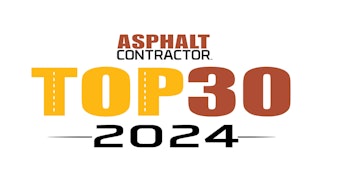
The new Perkins 2600 Series engine platform demonstrates how we’re leveraging our experience, intelligence and commitment to help OEMs navigate the energy transition with power solutions that deliver exceptional performance on the worksite.” - Jaz Gill, Perkins vice president of global sales, marketing, service and parts
As part of its commitment to delivering smarter solutions, Perkins has announced the development of the Perkins 2600 Series, a new 13-liter diesel engine platform designed to achieve power density and torque for heavy duty off-highway applications.
Targeting applications in agriculture, construction and numerous other sectors, the new platform extends Perkins portfolio with eight power ratings from 340 to 515 kW (456 to 690 hp) offering up to 3,200 Nm of peak torque. Industrial open power units configured with engine-mounted aftertreatment and cooling packs will also be available from the factory to support installation for original equipment manufacturers (OEMs).
Engine Configuration
Perkins will offer 2600 Series engines configured to meet the emissions standards of higher regulated countries, such as EU Stage V, U.S. EPA Tier 4 Final, China Non-road IV, Korea Stage V and Japan 2014, as well as versions for lesser regulated countries. The engines are compatible with renewable liquid fuels such as 100% hydrotreated vegetable oils (HVO), B100 distilled Biodiesel, and up to B100 fatty acid methyl ester (FAME) standard biodiesel. Additionally, its core architecture supports the future development of spark-ignited natural-gas and hydrogen fuel capabilities.
To date, engineers have completed more than 20,000 hours of design validation on the 13-liter engine platform. It will be available for early OEM pilots in 2025, with commercial production scheduled to begin in 2026. It is designed for dozens of off-highway applications, such as agriculture tractors, combines, harvesters, self-propelled sprayers; wheel and track loaders, excavators, dozers and other construction machinery; heavy lift trucks and other material-handling equipment; and large industrial pumps and compressors.
Performance
The Perkins 2600 Series features 82 patents granted to date across the entire engine platform.
It is designed to perform at altitudes of up to 12,000 ft. and in extreme ambient temperatures as high as 60°C (140°F) and as low as minus 40°C (minus 40°F) with aids.
The engine supports quality, reliability and maintenance through numerous design enhancements, including the integration of components as well as a reduction in the number of leak joints by more than 45%. Together, the upgrades result in lower fluids consumption and extended oil and fuel filter service intervals as long as 1,000 hours, reducing operating costs and downtime.
2600 Series engines will offer telematics solutions enabling OEMs to collect, analyze and integrate key engine performance data within a connected intelligent platform.
By modularizing and eliminating components, its architecture is space-protected to accommodate configuration adjustments anticipated for future tiers of emission standards in the U.S. and EU without relocating customer connection points. All eight power ratings for higher regulated markets will be available on a common core engine. The combination of the all-new rear gear train, stiffer core architecture, and common rail fuel system reduces noise by up to 3 dB when compared with Perkins current 13-, 15- and single-turbo 18-liter engines.
“As the off-highway industry advances toward a lower-carbon future, equipment manufacturers still face expectations for long-term productivity and reliability in the world’s most demanding work environments. said Gill.
Use the IRONPROS product search tool to find, analyze and compare construction equipment for your next project!



























